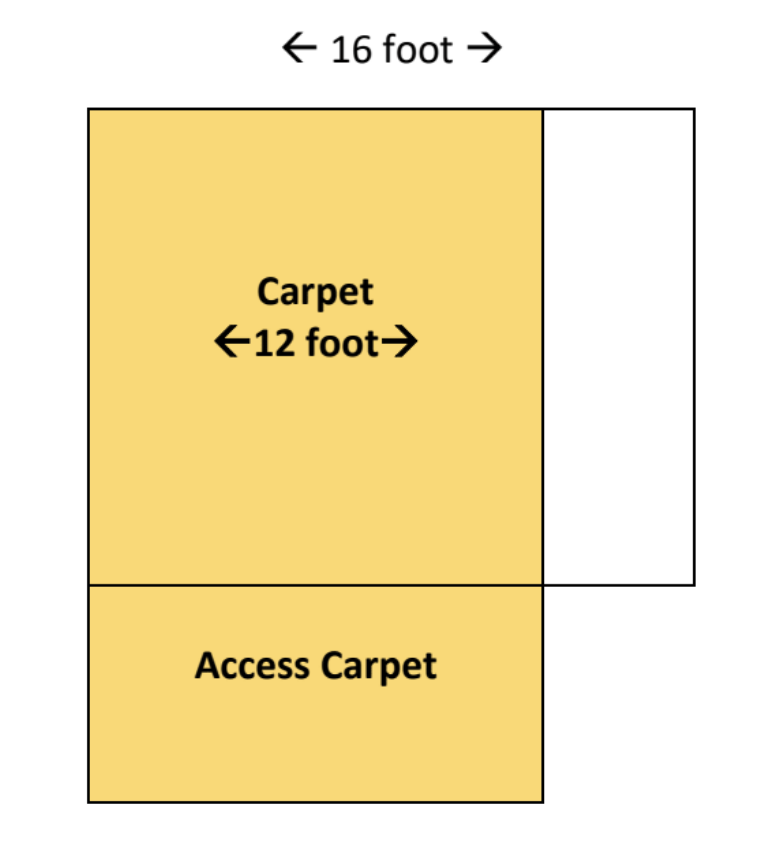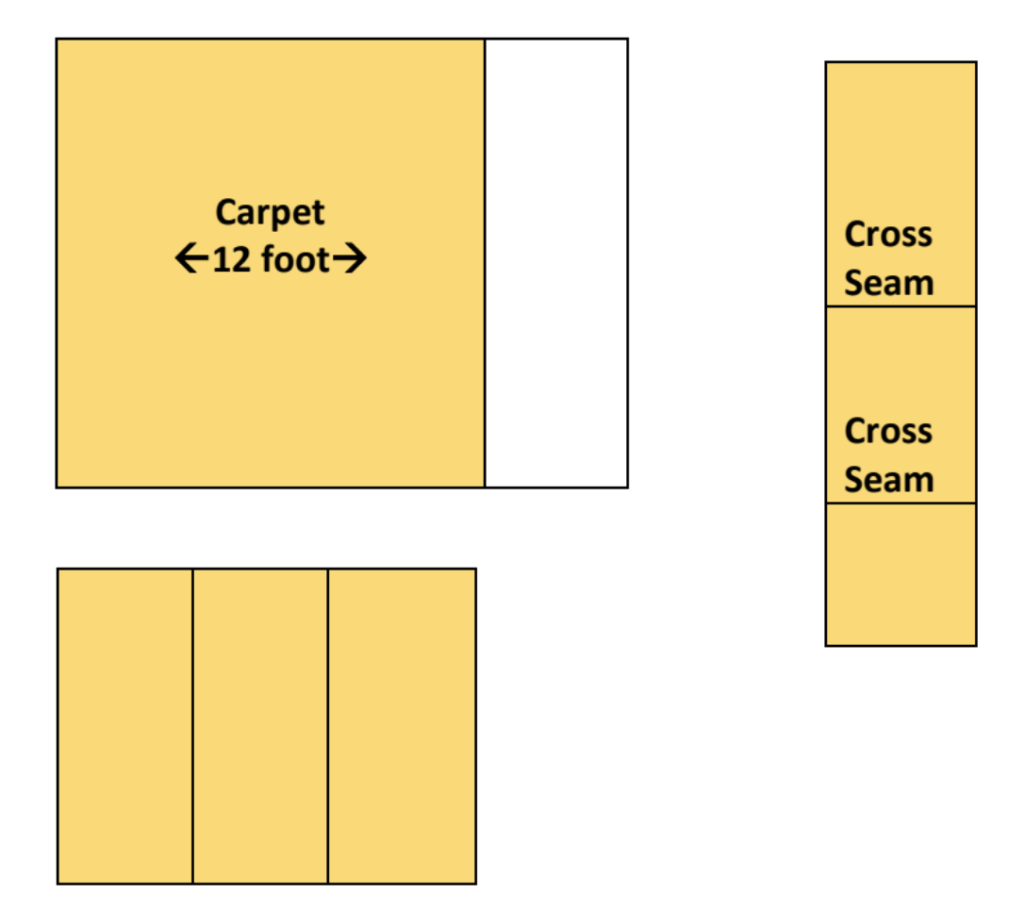
As you may or may not know, carpet typically comes in 12’ rolls with the rare exception of 13’1” and 15’. Being that way, carpet cannot be installed in a space with over 12-foot length or width without the need of a seam. These seams are held together by a special bonding tape. You probably have seams in your carpet right now that you may have never noticed. To better understand the procedure, we will walk you through a normal carpet seam.
Carpet is Directional
If a room is 16x 16, it does not just take a 12×20 roll. Carpet is directional, and because of this, your seams must follow a direction as well. Your roll will be flush to one wall then unrolled. The remaining part of the roll will be cut off to fill the room. It cannot be turned to fill the remaining portion of the room; however, it must be cut into sections and crossed seamed.

Cross Seams
When your excess carpet is removed, it will be cut into several pieces fill the rest of the room-these will be cross seams. Cross seams are a little more challenging because they are held together with seam tape. The tape is laid directly underneath the seam with half the tape on both pieces. A seam iron is heated and meticulously placed under the carpet to heat the tape. As the tape is heated, the iron is moved along the seam. The installers must carefully bind the carpet as they work their way down the seam.

Seam
Finally, the carpet is ready for the length of the room. This is done with the same method as prior. However, the longer the seam, the harder it can be. The installer may use a kicker to help manipulate and stretch the carpet while seaming.

In the end, your room will be wall-to-wall carpeted. When the seams have cooled, the carpet is stretched into place and installed. Carpet seaming takes time to master; therefore, it is highly recommended that an installer take on this project.

Leave a Reply